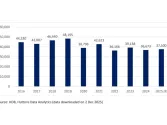
These 3 APAC countries were amongst the top 10 global capital sources in Q1
One APAC country took the fourth spot on the list.
Asia Pacific continues to assert its dominance on the global investment stage and play a key role in overall capital movements, according to a new report from Colliers.
Colliers’ Global Capital Flows June 2025 report found Singapore, Japan and Hong Kong were among the top 10 sources of global capital in the first quarter, with Singapore in fourth position, Japan seventh and Hong Kong tenth.
Japan ranked among the top five global cross-border capital destinations for standing assets, while Australia came in eighth position in the top 10. Japan’s share of activity remains above the five-year average.
“Asia Pacific remains the most attractive region for land and development sites, with seven of the top 10 markets – most of which maintained or improved upon their five-year average share of activity in Q1 this year,” Thomas Chak, Head of Capital Markets & Investment Services at Colliers Hong Kong, said. “China maintains market dominance, at 80 per cent of all cross-border activity.”
Office continues to be the most sought-after sector in Asia Pacific, followed by industrial and retail, while multifamily being the top sector of choice globally, mainly driven by the strong demand in the U.S. market.
The economic outlook remains largely positive for Asia Pacific, albeit mixed across markets. Forecasts for China, Hong Kong, India and Australia were relatively unchanged, but sentiment had weakened for Singapore, South Korea and Japan. Japan is slowly raising rates as core inflation stays elevated, while South Korea, Australia, and Singapore began rate cuts in Q1.
“Southeast Asian investors are increasingly active in Hong Kong’s commercial property market, drawn by attractive pricing and strong demand from the education sector. According to Thomas Chak, Head of Capital Markets and Investment Services at Colliers Hong Kong, transaction volumes have picked up compared to last year, supported by government initiatives and an increasingly accommodative interest rate environment.”



















 Advertise
Advertise




